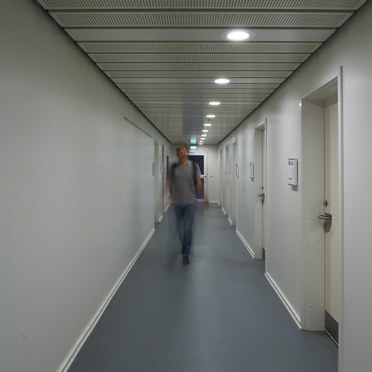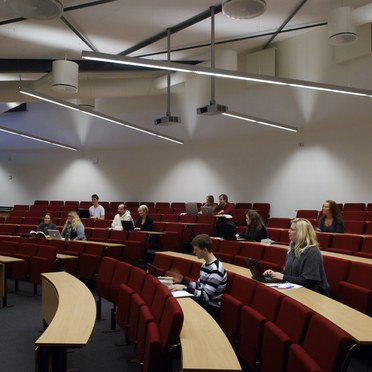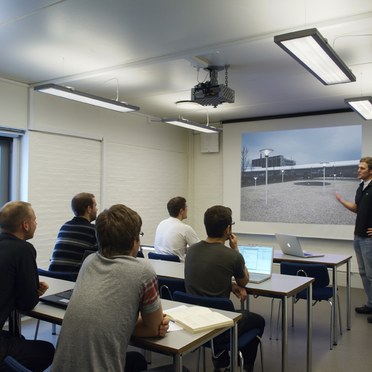Aalborg University, Denmark
- Lamp efficacy
Lamp efficacy
Ensuring the lamp efficiently converts electricity into light (lm/W).
- Ballast classification
Ballast classification
Controlling the electricity supply to the lamp (Energy Efficiency Index).
- Luminaire distribution
Luminaire distribution
Controlling light emission using optics which bend and shape the light to the correct location.
- System efficacy
System efficacy
Combining optical and thermal control within the luminaire (luminaire lm/W).
- Presence/absence detection
Presence/absence detection
Providing lighting only when it’s needed.
- Daylight detection
Daylight detection
Reducing waste light during daylight hours.
- Constant illuminance
Constant illuminance
Producing the correct lighting levels for the duration of the maintenance period.
- Task-scene setting
Task-scene setting
Allowing the user to set scenes and adapt the lighting to different tasks.
- Timed off
Timed off
Automatic cut-off to turn all lights off during unoccupied hours.
- Task lighting
Task lighting
Lighting task areas with the correct amount of light.
- Zoning of lighting
Zoning of lighting
Zoning lighting in accordance to occupancy patterns or window location.
- Maintenance schedule
Maintenance schedule
Tailoring maintenance schedules in accordance to product age, performance and environment.
- Waste light
Waste light
Eliminating waste light which does not hit the intended target.
- Reflectance
Reflectance
Taking advantage of light which is reflected from the surface within the space.
- Visible smart metering
Visible smart metering
Enabling results of actions to be quickly seen as increased or decreased energy use to encourage responsible energy consumption.
Base LED acclaimed for energy savings
Like all universities, Aalborg is concerned with cutting energy use as far as possible without reducing the quality of its facilities. Indeed Danish building regulations (Bygningsreglementet) require a reduction in consumption of 10 and 20% from 2006 levels by 2011 and 2013 respectively.
Keld Bo Jensen, electrical installation manager, heard about the potential electricity savings he could achieve using the Base LED downlight along corridors in place of the existing 13W compact fluorescent installation, and invited Thorn lighting consultant Bo Janniche to demonstrate just how much energy could be saved. He was surprised at the result!
"The interesting thing about the transition to Base LED, in addition to the 30 per cent savings, is a more than doubling of the illuminance (70 to 180 lux) with a better light distribution. In addition, the LED light source has a significantly longer life expectancy which extends time-frames for renewal and maintenance, thus contributing to the economies," he said.
To date over 100 downlights have been installed. Other Thorn luminaires, such as Planor MPT and Track (Equaline), are used in the classrooms and lecture theatres helping the university to reduce overall lighting energy requirements by 20 per cent, while still improving levels of comfort.
Rated at 12W, the Base LED downlight matches the light levels of an 18W compact fluorescent downlight, yet uses 50 per cent less energy and lasts over four times longer. Available in 2700K and 3500K options, it has an excellent CRI (Ra) of 94 and is dimmable to 20 per cent.



